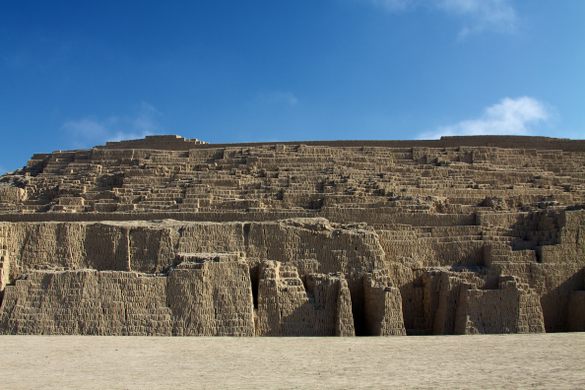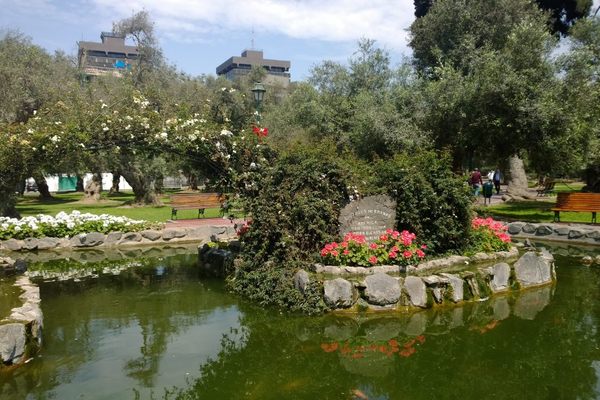In the middle of an upscale residential neighborhood in the Miraflores district of Lima sits an ancient adobe and clay pyramid, dating from around 500 CE.
The pyramid, known as Huaca Pucllana, was built by members of the Lima culture, a Pre-Incan indigenous coastal civilization that lasted in the region from around 100 CE to 650 CE. The Lima culture and their contemporaries were notable for their mastery of irrigation, which allowed them to develop settlements across considerable territory. Surrounded by a desert climate, the Lima and other early Peruvian cultures created sprawling networks to carry much-needed water from springs and rivers to the towns.
Huaca Pucllana served partially an administrative site for the surrounding irrigation zone. The complex is separated by a large wall running from north to south, and spaces that were likely used for public meetings, storage, and other production-focused undertakings are focused along its eastern side. The west half was a ceremonial sector, containing the 22-meter-high pyramid and used for religious rites.
The Lima culture was overtaken by the Wari culture sometime around 700 CE. Under the Wari, Huaca Pucllana held significance primarily as a burial site for the nobility. The first intact tomb from this period was found on the grounds in 2008, and held the remains of three people: two adults wearing masks, and a sacrificed child.
Today, the Huaca Pucllana complex includes an area for workshops, a small souvenir shop and a restaurant overlooking the ruins. The museum exhibits ceramics, textiles, tools, artifacts and other remains found on the site over the years.
Know Before You Go
Calle Gral. Borgoño, block 8, Miraflores District, Lima, Peru























Follow us on Twitter to get the latest on the world's hidden wonders.
Like us on Facebook to get the latest on the world's hidden wonders.
Follow us on Twitter Like us on Facebook